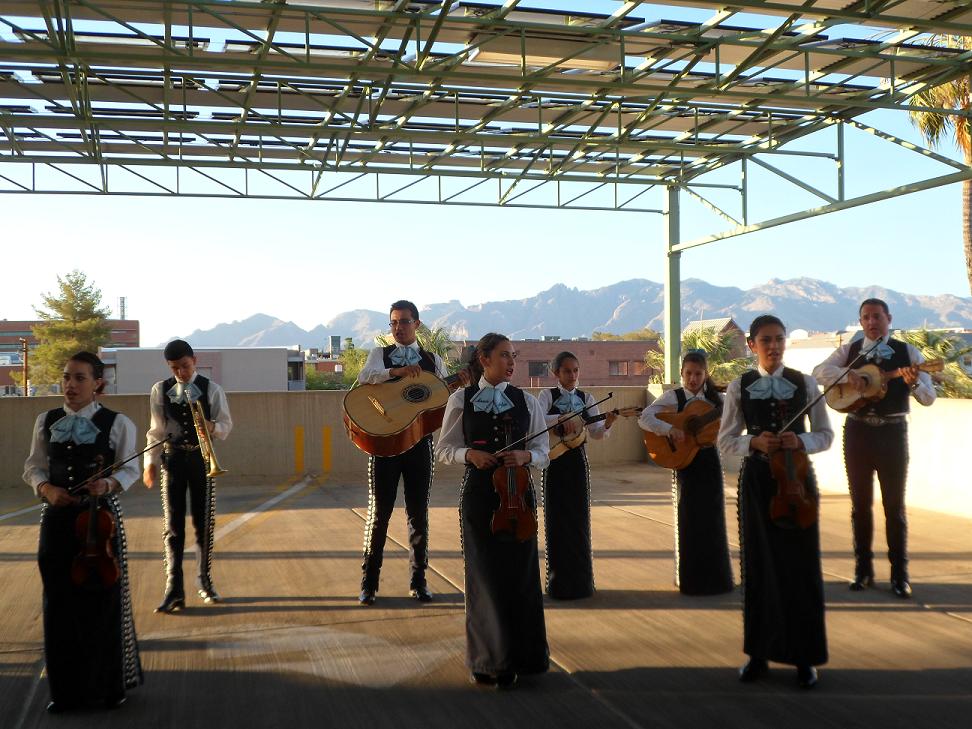Adapting to the intense summer heat of the Sonoran desert, I thought it wise to don shorts, flip flops and a t-shirt on the opening day of the “Climate Adaptation Futures” conference in Tucson, Arizona. I hadn’t anticipated quite how effective the solar powered air conditioning at the University of Arizona would be and, needless to say, I spent much of the first day wishing I had dressed more appropriately. Despite the chill in the air, the warm welcome of the conference organisers and the thoughtful talks in the opening plenary session set the tone for an interesting and enjoyable, though at times sluggish, conference.

There were approximately 750 registered participants, nearly half of whom reside in the US with the remainder spread fairly evenly across the rest of the world; 50 people from African institutions were present. In the field of climate change adaptation, understanding the local context is crucial so it was pleasing to see a geographically diverse group of people. Yet whilst there was some representation from the private sector, the conference primarily focussed on the pure research dimension of adaptation and may therefore have only a limited impact on the policy community. That said, the applications of the research evident in the presentations incorporated a wide range of societal sectors and vulnerable communities. I spoke in a session titled “insurance as adaptation” which, at least in my not at all biased view, succeeded in delivering a number of engaging talks providing multiple perspectives from those involved in the application of adaptation research for the insurance community. I particularly enjoyed Eric Holthaus’ reflection on the value of weather index insurance (a personal research interest of mine), outlining the limitations of inappropriately designed insurance and emphasising the need to consider the precise needs of vulnerable communities.
Confirmation that climate change is far more than a natural sciences issue became increasingly apparent throughout the conference. By day two any climate scientist may be excused for feeling a little out of place and by day three it was clear that climate science informs only part, and indeed often a very small part, of the puzzle facing adaptation decision makers. I took part in a panel session on the future of adaptation research, from the perspectives of early career researchers. It was interesting to hear the insights of colleagues from Mexico, Australia and the Netherlands about the challenges of engaging practitioners in adaptation. Numerous issues were raised which invoked a healthy discussion on topics such as governance, economics and the synergies with environmental adaptation more generally. A comment regarding the extent to which population dynamics affect the ability of communities to adapt raised the issue whereby the focus on vulnerability, impacts and adaptation (otherwise referred to as VIA) means that exposure can be neglected as a major driver of risk. As the token natural scientist, I struggled to articulate my views on the evolving role of climate science in adaptation research. The conference in general and this session in particular reinforced my view that informed adaptation is more sensitive to issues addressed in the social sciences rather than the natural sciences. I therefore remain unclear as to the precise role of “climate services”, stemming from meteorological agencies and climate research institutions, in the adaptation field. Should climate service providers predominantly focus on the provision of quantitative climate information or engage more fully in decision processes and methodologies?
Other conference highlights worthy of note include a passionate talk by Cynthia Rosenzweig who expressed her thoughts regarding the past neglect of urban areas as foci for adaptation efforts. Optimistic about the capacity for cities to adapt, she stated that “city leaders are the right level of governance to take action”. Of particular interest to me was a session on uncertainty and adaptation and a session on robust decision making. In the former session, we played the “crossing the river” game that many people will recall from Anna’s CSAG seminar at the end of 2011. This game confirms that decisions can be made with very limited information; the notion that more detailed information is needed in order to make decisions is therefore misleading. Of course more information is desirable but the value of further information is contingent on how confident we are in the quality and the representativeness of that information. Roger Jones, from Victoria university, gave an animated account of how nonlinear and abrupt climate changes might affect adaptation thinking. Referring to decadal and centennial variability he proposed that climatic variability constitutes a mechanism for transporting energy around Earth (or as he would prefer to call the planet, “Ocean”). Incidentally, the topic of decadal climate information was taken up in a very interesting workshop organised by Peter Johnston and Mark New from UCT on the day following the conference. In the closing session, Saleemul Huq made a pertinent observation about the lack of south-south learning. He said that adaptation researchers from South America, Africa and Asia have a lot to gain by working together but usually they only get to meet in conferences located in Europe or North America.

Of course no conference is complete without a chance to network and enjoy the local cuisine. The conference dinner was a novel affair situated on the top floor of a parking garage, with solar panels for a roof. Entertainment was catered for by a marvellous Mariachi band made up of local young musicians and the mountains of the Saguaro national park provided a stunning backdrop.
The conference ended in a typically American fashion with an optimistic outlook on the future of adaptation research and practice, followed by the X-Factor style announcement for the location of the 2014 conference. “And the winner is…(pause for dramatic silence)…Fortaleza, Brazil!!” (queue rapturous applause). The location may be different but if I were to be cynical, I imagine the content is likely to be largely similar. Nonetheless, a lot can happen in two years (well not in climate negotiations) so it remains to be seen what advances can be made in adaptation research. I certainly anticipate with interest the emerging research over the next two years and hope I can contribute in some way to this exciting area…though I may have to convert to become a social scientist first!
Zoe Visser
I really enjoyed your take on this conference Joe. There is a movement globally towards interdisciplinary work on climate-related problems. These days it is the responsibility of scientists and social scientists to bring their skills together and collaboratively engage around complex social ecological issues like climate change, however uncomfortable it might be at times.
Wiktor Daron
An interesting piece Joe. Well written, although I suspect the move towards social sciences is a long way off as yet. The world needs more scientists and socialism not social scientists !